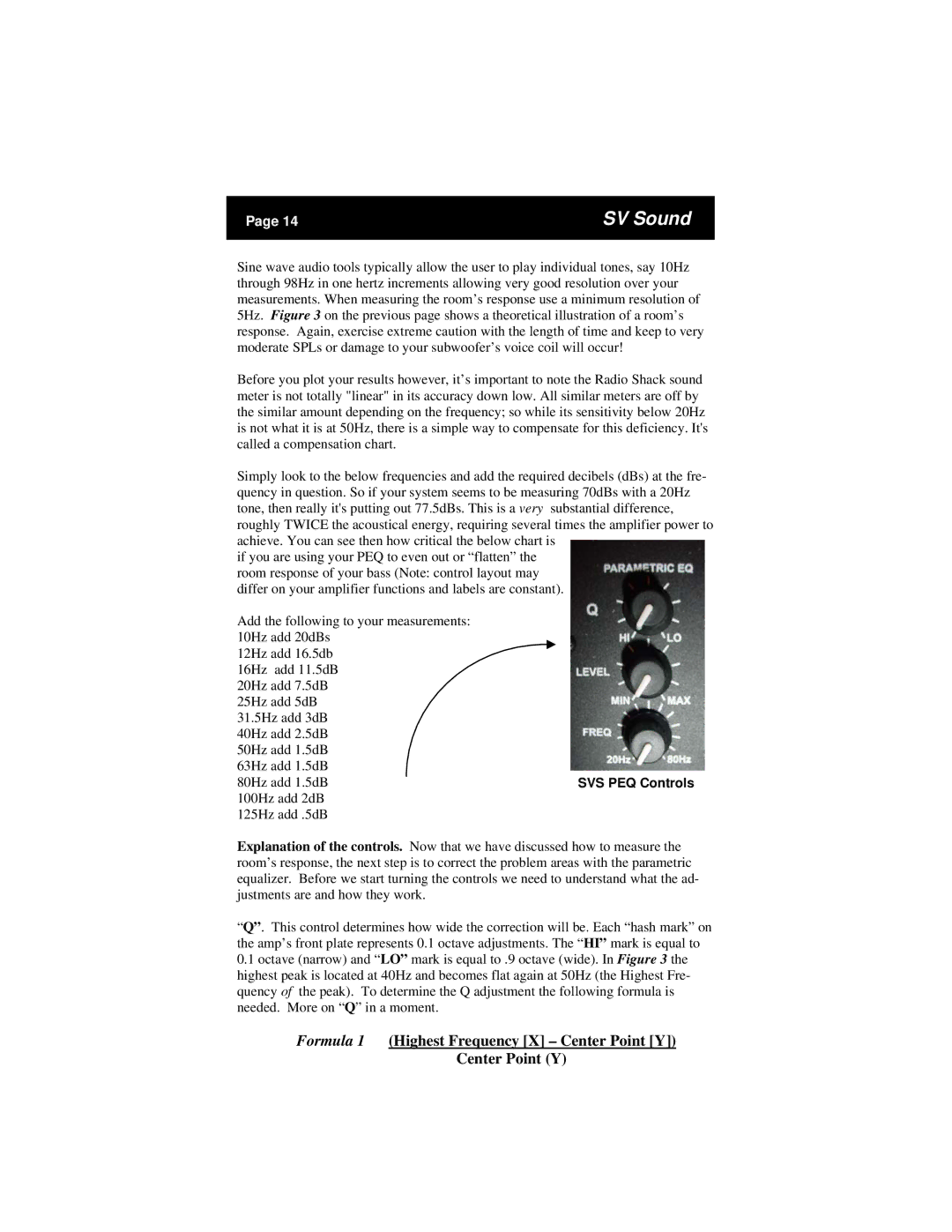
Page 14 | SV Sound |
|
|
Sine wave audio tools typically allow the user to play individual tones, say 10Hz through 98Hz in one hertz increments allowing very good resolution over your measurements. When measuring the room’s response use a minimum resolution of 5Hz. Figure 3 on the previous page shows a theoretical illustration of a room’s response. Again, exercise extreme caution with the length of time and keep to very moderate SPLs or damage to your subwoofer’s voice coil will occur!
Before you plot your results however, it’s important to note the Radio Shack sound meter is not totally "linear" in its accuracy down low. All similar meters are off by the similar amount depending on the frequency; so while its sensitivity below 20Hz is not what it is at 50Hz, there is a simple way to compensate for this deficiency. It's called a compensation chart.
Simply look to the below frequencies and add the required decibels (dBs) at the fre- quency in question. So if your system seems to be measuring 70dBs with a 20Hz tone, then really it's putting out 77.5dBs. This is a very substantial difference, roughly TWICE the acoustical energy, requiring several times the amplifier power to achieve. You can see then how critical the below chart is
if you are using your PEQ to even out or “flatten” the room response of your bass (Note: control layout may differ on your amplifier functions and labels are constant).
Add the following to your measurements: 10Hz add 20dBs
12Hz add 16.5db 16Hz add 11.5dB 20Hz add 7.5dB 25Hz add 5dB 31.5Hz add 3dB 40Hz add 2.5dB 50Hz add 1.5dB 63Hz add 1.5dB
80Hz add 1.5dBSVS PEQ Controls 100Hz add 2dB
125Hz add .5dB
Explanation of the controls. Now that we have discussed how to measure the room’s response, the next step is to correct the problem areas with the parametric equalizer. Before we start turning the controls we need to understand what the ad- justments are and how they work.
“Q”. This control determines how wide the correction will be. Each “hash mark” on the amp’s front plate represents 0.1 octave adjustments. The “HI” mark is equal to
0.1octave (narrow) and “LO” mark is equal to .9 octave (wide). In Figure 3 the highest peak is located at 40Hz and becomes flat again at 50Hz (the Highest Fre- quency of the peak). To determine the Q adjustment the following formula is needed. More on “Q” in a moment.
